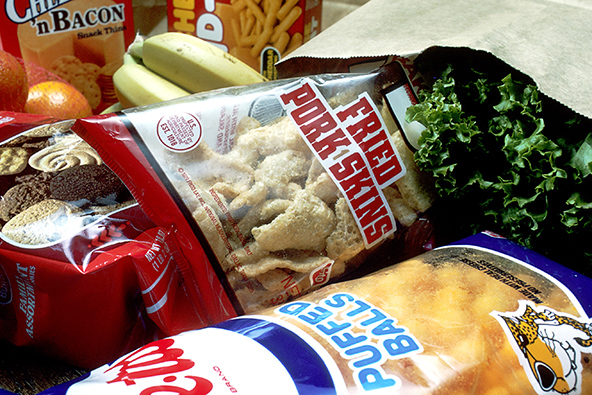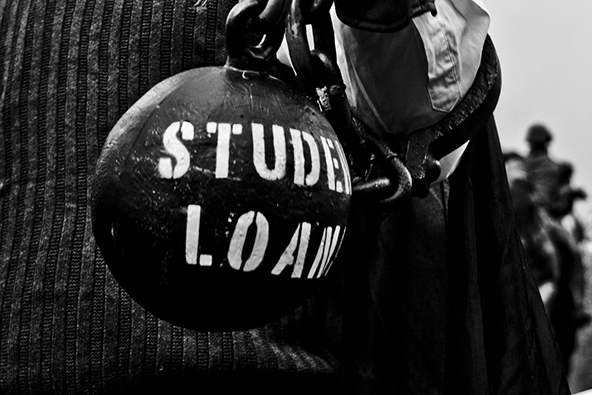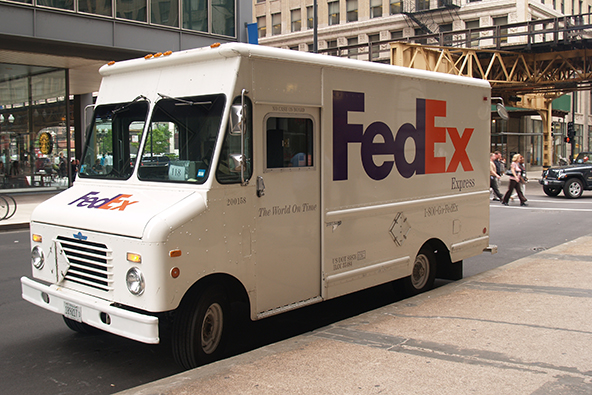Credit Cards Make You Fat

That is what a newly-released study in the Journal of Consumer Research tells us. The authors—economists Manoj Thomas, Kalpesh Kaushik Desai, and Satheeshkumar Seenivasan—have looked into the shopping patterns of 1,000 American families over a period of six months and have found that whenever a credit card was used as a payment method, the shopping basket contained a larger proportion of unhealthy foods. The authors’ explanation is that “credit cards reduce the pain of payment”. In fact, the concept of “sensitivity to pain of payment” is the focus of the study.
However, assuming that the study’s methodology and conclusions are sound, the question becomes exactly what we should do with this knowledge. The authors do not attempt to address that issue, beyond making the rather obvious observation that “at least some consumers might be able to curb their impulsive urges by paying in cash”. So should regulators require that card issuers put credit card seekers through an obesity test, before deciding on whether to approve or reject their applications? Additionally, should we expect that the Capital Ones of the world get the McDonald’s treatment and find themselves at the wrong end of class action suits for their complicity in making our nation as fat as it is? After all, no issuer I can think of ever warned me that using their credit card could add to my waist line (I am happy to report that my weight is well under control, thanks for asking). Is this question really as absurd as you may think? I don’t know—I’ve seen weirder cases being heard in our courts. Anyway, let’s take a look at the study.
The Pain of Cash Payments
As pain is at the core of the authors’ research, we could do worse than start by looking at their discussion on the matter. The three economists begin by citing a 2008 paper, which found that, when participants in a simulated shopping study were given $50 in cash and $50 in scrip, they spent more when they were using scrip than when they were using cash. This and other studies combined to offer evidence for the proposition that cash payments feel different from “other less vivid and emotionally more inert modes of payments”.
However, not all purchases are based on spontaneous impulses, we are warned:
While purchase decisions of vice products—such as cookies, cakes, and pies—are influenced by spontaneous impulsive responses, purchase decisions of virtue products—such as fat-free yogurt and whole wheat bread—tend to be more deliberative.
In other words, a purchase of fat-free yogurt could be rationalized to explain away the pain of payment, but that would be more difficult to achieve with potato chips where the purchase decision is more visceral. As a result, the pain of paying in cash would be more strongly felt when purchasing a “vice product” than a “virtue product”. Consequently, the proportion of “vice products” in a shopping basket would be higher for consumers using non-cash payment methods. And that is precisely what the authors have found in their study. Here is the gist of their findings:
Some food items that are commonly considered unhealthy also tend to elicit impulsive responses. The pain of paying in cash can curb impulsive urges to purchase such unhealthy food products. Credit card payments, in contrast, are relatively painless and weaken impulse control. Consequently, consumers are more likely to buy unhealthy food products when they pay by credit card than when they pay in cash. Results from four studies support these hypotheses. Analysis of actual shopping behavior of 1,000 households over a period of 6 months revealed that shopping baskets have a larger proportion of food items rated as impulsive and unhealthy when shoppers use credit or debit cards to pay for the purchases (study 1). Follow-up experiments (studies 2-4) show that the vice-regulation effect of cash payments is mediated by pain of payment and moderated by chronic sensitivity to pain of payment. Implications for consumer welfare and theories of impulsive consumption are discussed.
Note that both credit and debit cards are found to reduce the pain of payment, even as for all practical purposes debit is a substitute for cash, as the payment amount is immediately deducted from the consumer’s checking account.
So What Do We Do with This Knowledge?
Unfortunately, having established a correlation between the pain of payments and product types, the researchers content themselves with the observation that their “results have implications for consumer welfare”. They do, however, suggest that one promising area of future research might be the investigation of when “visceral regulators” of shopping decisions such as cash might be more effective than willpower. And this is where it gets interesting.
Suppose that future research confirms the authors’ educated guess that “visceral regulators are likely to be more effective in self-control because willpower gets depleted”. What do you do then? Do you ban obese people from getting credit cards, because that would help strengthen their impulse control? In fact, if you did that, you would also have to ban obese consumers from getting a debit card, because, as we already saw, debit cards also reduce the pain of payment. Or do you ban merchants from accepting card payments from obese people? Perhaps place scales by the checkout register to check shoppers’ weight? Or perhaps, as I already suggested, just leave everything as is until at some future point a class action suit is filed against a supermarket chain for failing to disclose the link between credit card payments and obesity? The opportunities are boundless.
The Takeaway
Obviously, obesity is a huge and rapidly growing problem in the U.S., just as it is the case in most advanced countries around the world. As the paper points out, according to the Center for Disease Control, 34 percent of American adults are obese, up from 23 percent in 1988, and an additional 33 percent are overweight. And we do need to know as much as possible about the causes of this epidemic, including the relationship between payment methods and purchases of unhealthy food. Hopefully, at some future point we will be able to make use of the data.
Image credit: Wikimedia Commons.


